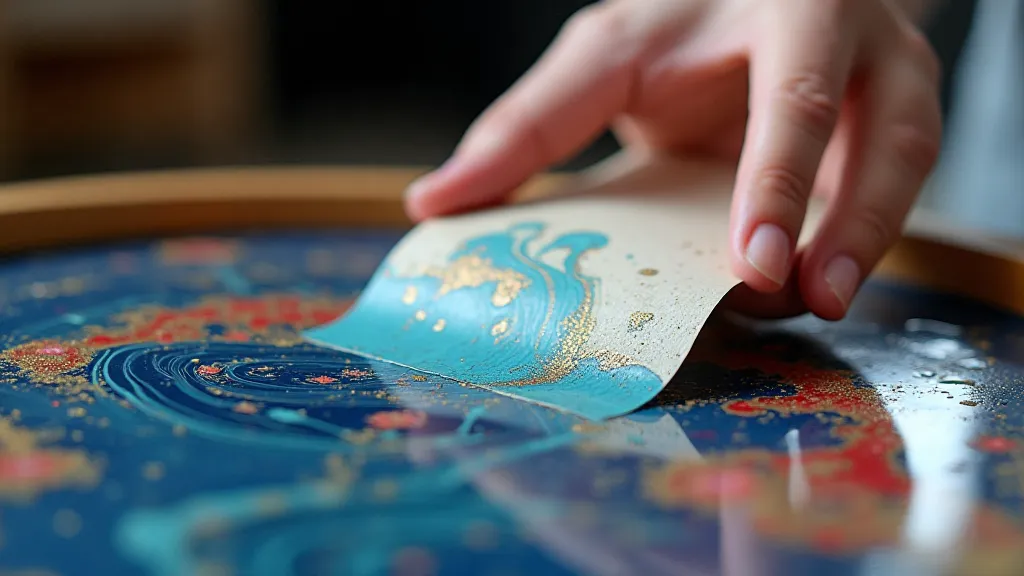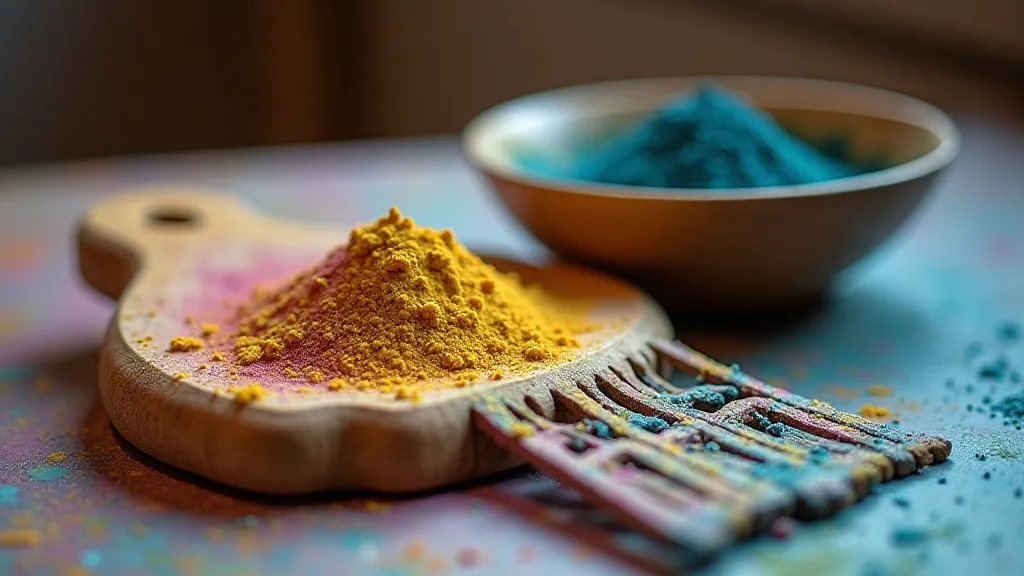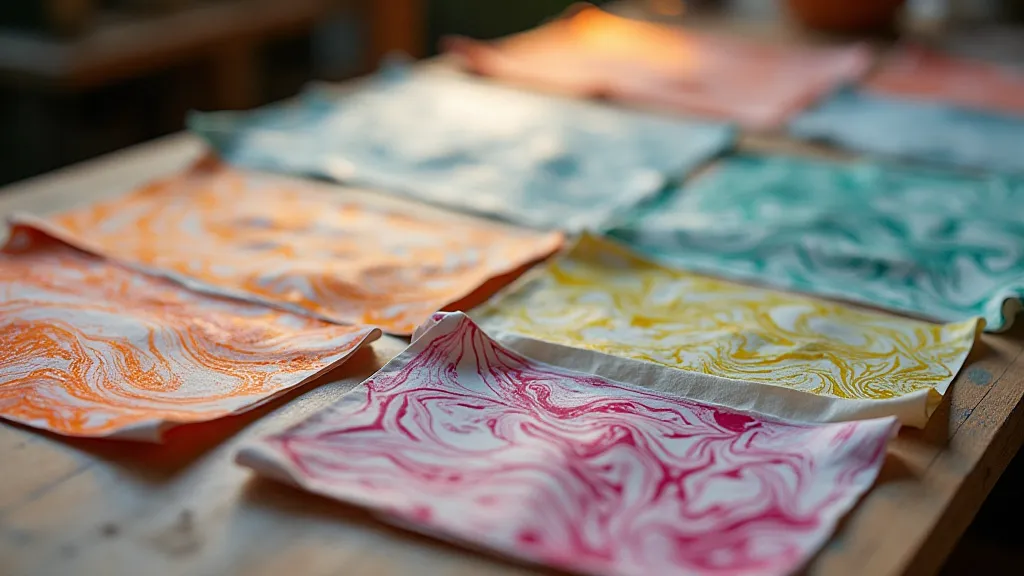Ephemeral Bloom: Capturing a Moment of Beauty Before it Vanishes
There's a particular melancholy that settles in when observing something exquisitely fragile, something created with such care only to exist for a fleeting moment. I’ve felt it while watching dust motes dance in a shaft of sunlight, and I’ve felt it deeply while studying antique accordions. Their bellows, once pumping out joyous melodies, are now often cracked and silent. Their intricate mother-of-pearl keys, once gleaming under stage lights, are now often dulled with age. This sense of temporal fragility, this profound awareness of impermanence, is also the heart of paper marbling.
Paper marbling isn’t just about creating beautiful paper; it's about embracing the inherent ephemerality of the process. Unlike painting, where the artist has a degree of control, or printmaking, where multiples are created, marbling is a conversation with chance. You introduce colors to a thickened, viscous surface – the "size" – and then float patterns upon them using tools like combs, rakes, and brushes. The resulting design is utterly unique, never to be replicated exactly. Each swirl, each bloom, is a singular moment in time, destined to transform as it’s transferred to paper.

A History Rooted in Trade and Secrets
The history of paper marbling is a fascinating tapestry woven across continents and cultures. While the exact origins are difficult to pinpoint, the technique likely emerged independently in multiple places. Evidence suggests forms of marbling existed in ancient Egypt, where decorated papers were used in bookbinding. Similar techniques were practiced in Persia, where they were used to embellish textiles and paper for royal correspondence. The practice traveled along trade routes, evolving and adapting with each new culture it encountered.
Its presence in Europe is firmly linked to the Silk Road. The technique arrived in Italy during the Renaissance, possibly brought by merchants from the East. From Italy, it spread throughout Europe, becoming particularly popular in England during the 16th and 17th centuries. The English marblers were renowned for their artistry, creating exquisite papers used for bookbinding, gift wrapping, and decorative purposes. These papers were highly prized, reflecting the growing importance of aesthetics and craftsmanship in European society. What made it so secretive? Because marblers guarded their recipes and techniques, the knowledge was often passed down through families or apprenticeships, adding to the mystery and allure of the craft.
The Dance of Color and Size
Understanding the science and technique of paper marbling can be surprisingly accessible, yet mastering it requires patience and observation. The "size" is the key. It’s a viscous solution—traditionally made from seaweed (carrageenan) or starch—that creates a surface upon which the colors can float. The thickness of the size is critical. Too thin, and the colors will sink; too thick, and they'll be too difficult to manipulate. Different marblers developed their own variations on the size recipes, often keeping the precise ingredients and ratios a closely guarded secret.
The pigments themselves play a vital role. Traditionally, natural pigments derived from plants, minerals, and even insects were used. These pigments often had a subtle luminosity and a depth of color that modern synthetic pigments struggle to replicate. The way these pigments interact with the size, the way they spread and blend, is what creates the unique patterns we associate with paper marbling.
Embracing the Unexpected: Finding Beauty in Imperfection
One of the most compelling aspects of paper marbling is the relinquishing of control. While you can influence the pattern by manipulating the size and using different tools, the final outcome is always a surprise. It's a lesson in acceptance, a reminder that beauty can be found in imperfection. There's a certain serenity that comes from embracing the unexpected, from letting go of the desire to control every detail.
I find a parallel here with the restoration of antique accordions. You can meticulously clean and repair the mechanics, replace missing keys, and even refinish the exterior. But you can never fully restore an accordion to its original glory. There will always be traces of its history, the marks of time and use. And it’s in these imperfections, in these subtle imperfections, that the accordion’s true beauty resides.

Translating Impermanence into Impactful Writing
The appreciation for impermanence instilled by paper marbling and the restoration of antique instruments extends far beyond the studio or workshop. It’s a perspective that can profoundly impact how we approach our creative work, particularly in writing. Consider this: just as a marbling pattern vanishes the moment it’s transferred to paper, words too are fleeting. They are read, absorbed, and then often forgotten. How, then, can we imbue our writing with lasting impact?
The answer, I believe, lies in embracing the ephemeral nature of language itself. Recognize that every word carries a weight, a history, a resonance that is unique to the moment it’s uttered or written. Don't strive for perfection, but for authenticity. Be willing to experiment, to take risks, to embrace the unexpected turns of phrase. Like a marbler carefully balancing colors on a size bath, the writer must find the precise combination of words to create a resonant and meaningful whole.
Furthermore, appreciating the process – the hours spent researching, drafting, revising – is crucial. Just as a marbler finds joy in the dance of color and size, a writer must find joy in the act of creation itself. It’s the journey, not the destination, that truly matters.
A Continuing Legacy
Paper marbling is experiencing a revival today, with artists and craftspeople rediscovering the beauty and versatility of this ancient technique. New tools and materials are being developed, but the fundamental principles remain the same: a deep respect for the materials, a willingness to experiment, and an acceptance of the unexpected.

It's a craft that teaches us not only about the beauty of color and pattern but also about the importance of embracing impermanence, finding joy in the process, and recognizing the profound beauty that can be found in the unexpected.





